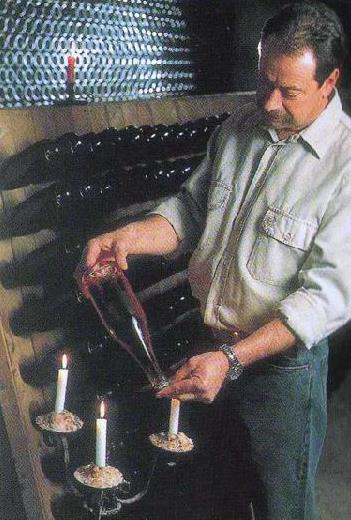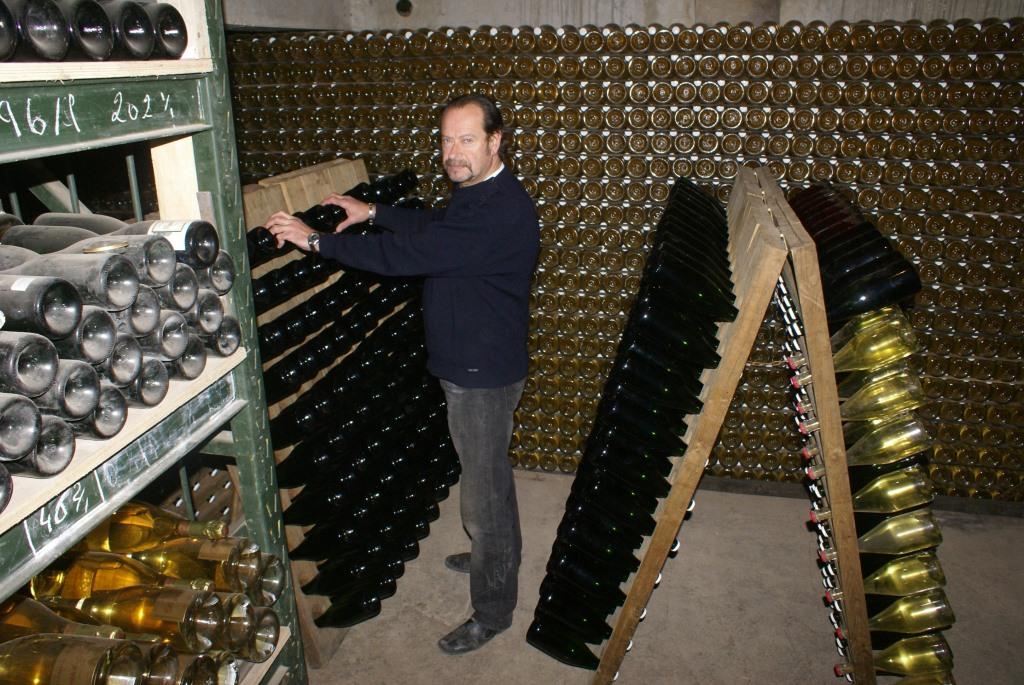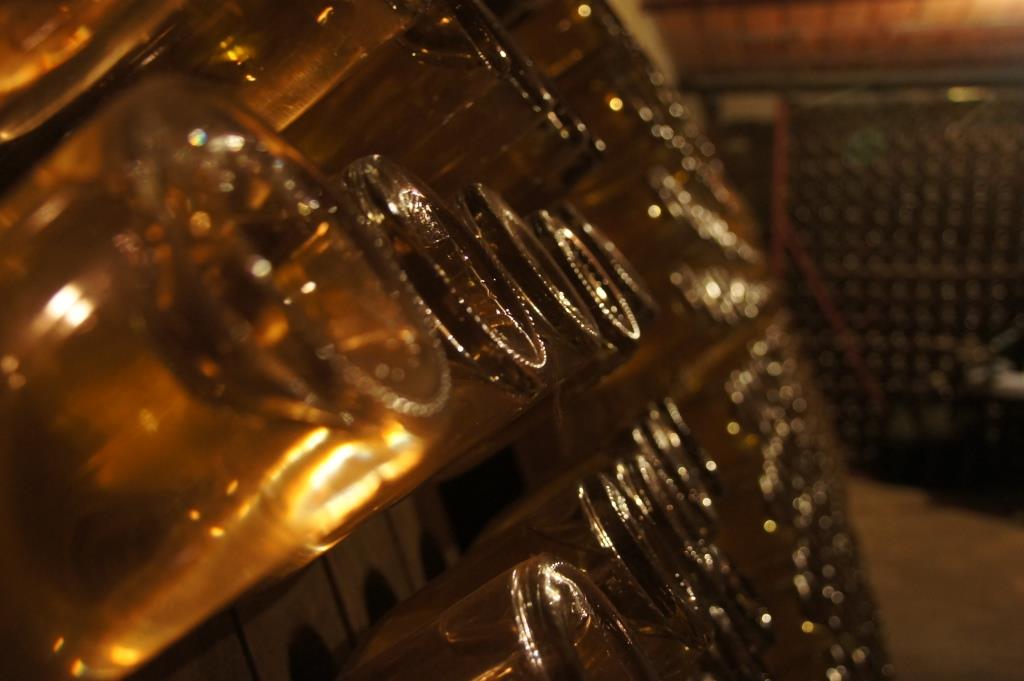

Back
to the Website
Elaboration of our champagne
After
this long rest period, the wine gets its brightness by
removing the residue that has been formed during the "prise de
mousse". This is called the “remuage”, whereby sediments
(yeast and remuage additives) are collected in the neck of the
bottle, and then removed during the phase of 'disgorgement'.
To this end, the bottles are gradually brought from their
horizontal position into a nearly vertical one, with the neck
down. This way the residue falls into the bottle neck. At
Champagne Doyard Mahé this operation is still partially manual
on wooden tables (‘pupitres') . The bottles are regularly
turned 1/8 or 1/4, and at the same time gradually placed
vertically. The residue falls and the wine becomes very
bright. This phase is followed by the disgorgement: the
residue is removed from the bottle neck. The neck is immersed
in an ice-cold solution (-27 ° C), so that in the neck of the
bottle an ice pack is produced which retains the sediment. As
soon as we open the bottle, the internal pressure causes
removal of the plug, losing only a limited amount of champagne
and pressure. During this operation a small amount of oxygen
will flow into the bottle; it will – together with the liqueur
de dosage which is now added - contribute to the evolution of
the aromatic characteristics of the wine. The added liquid,
which is also known as 'shipping liqueur', is usually composed
of candy dissolved in older champagne. Check the
specifications of our champagnes in order to know the exact
quantities that we use. The dosage is the last operation of
the wine before the bottle is finally sealed with a cork.


